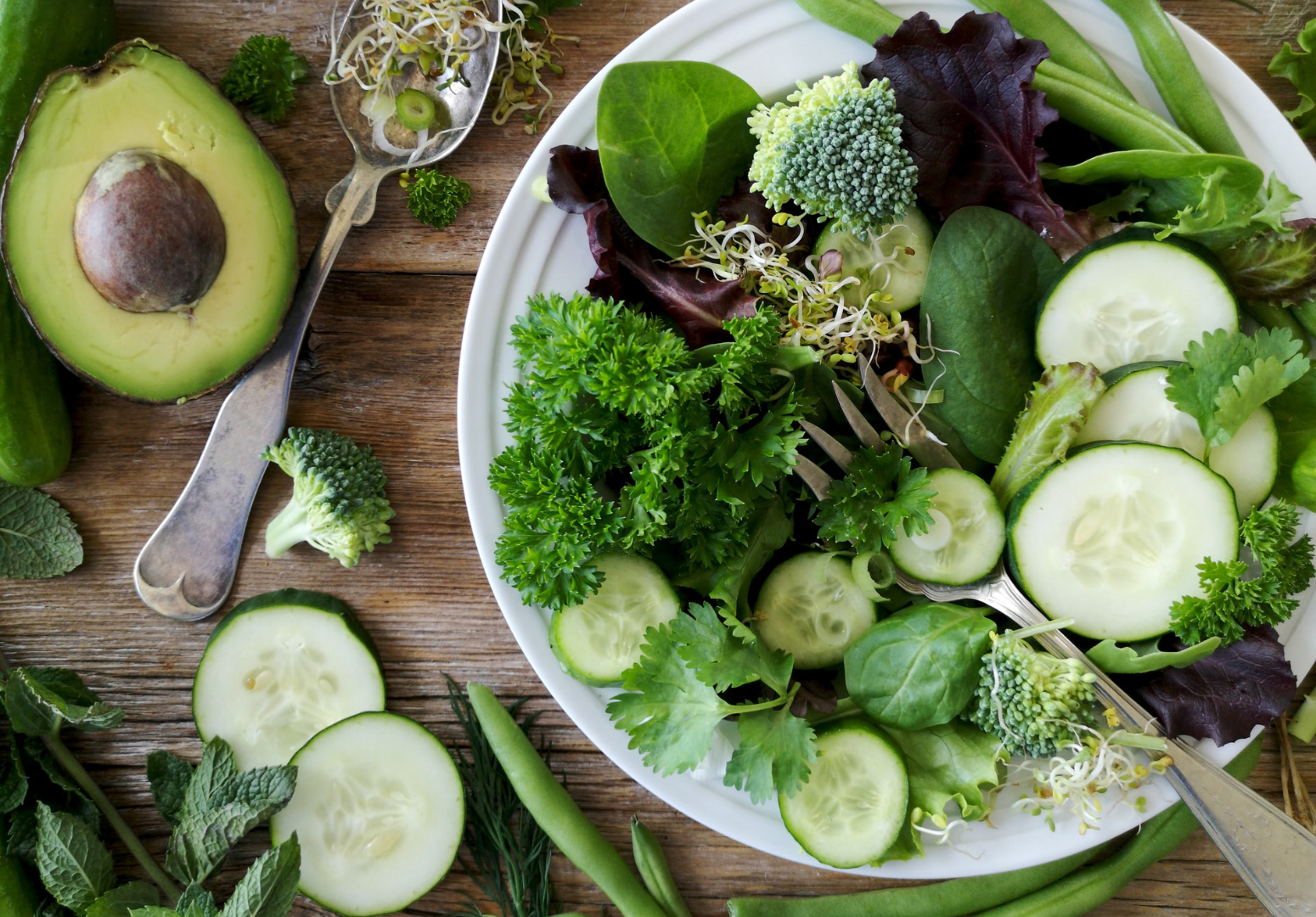Plants aren’t the only ones who can make good use of chlorophyll. Find out how eating your greens can benefit you in the biggest ways.
Imagine placing an order for a side of chlorophyll with your sirloin steak. Or better yet, a chlorophyll salad as a starter. Yum, right? Although this word is something you probably associate with your high school biology classes, you’ve been consuming chlorophyll nearly every day of your life. Think creamy spinach, green detox juices, broccoli or green beans. MK is here to unpack all the fuss over chlorophyll.
What is Chlorophyll?
‘It is a green pigment found in most plants,’ explains registered dietitian and ADSA spokesperson Mari Pronk. ‘Chlorophyll is tasked with triggering photo-synthesis: the process where sunlight is absorbed to turn water and carbon dioxide into energy, which is vital for plant growth.’
A distinctive hue
As previously mentioned, chlorophyll is a green pigment that absorbs light, mostly the blue and red light in the spectrum, which in turn reflects green — the part that wasn’t absorbed by the plant. ‘Fruits and vegetables that contain chlorophyll will thus be green,’ says Mari. But not all plants and fruits and veggies are exactly the same green. In fact, shades could vary from a deep dark green or a lighter colour, to a yellow-green. Mari explains that, ‘Although most vegetables and fruit contain chlorophyll, the greener the product, the higher the amount of chlorophyll’.
It’s good for you, trust us!
Have you ever noticed how good your breath smells after munching on some leafy greens? Well, there’s a reason for that. ‘It combats bad breath and body odour,’ says Mari. But that’s not the only potential benefit attributed to chlorophyll. It is also believed to act as an anti-inflammatory — and is especially useful for individuals who have chronic inflammation such as arthritis. Chlorophyll can boost energy levels, help minimise the signs of ageing, improve hunger and food cravings, better skin conditions and helps to heal wounds. It also neutralises toxins and plays a key role in cancer prevention by binding to toxins in the intestine, preventing them from being absorbed. ‘Although further scientific studies are needed to strengthen the evidence for the health benefits attributed to chlorophyll, it is still wise to eat foods high in chlorophyll because these foods also provide other beneficial vitamins, minerals and fibre, advises Mari.
Words: Dylon Phillips | Photography: Unsplash







